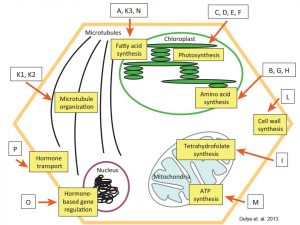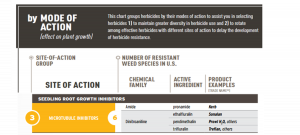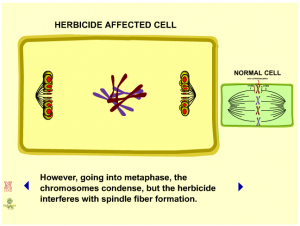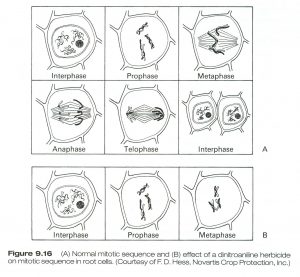Chapter 20: MOA Part 5 – Seedling Root Growth Inhibitors
20.3 Herbicides that Interfere with Seedling Root Growth
There is one Herbicide Mode of Action group that hinders a plant’s ability to make spindle fibers:
- Seedling Root Growth Inhibitors
- Group 3. Microtubule Assembly Inhibitors (MAI) (HRAC Group K1)


Let’s now explore how these Group 3 Seedling Root Growth Inhibitors, ultimately interfere with plant growth.
There is a protein called tubulin that is part of the microtubules and spindle fibers. It is the tubulin protein that this class of herbicides target. Without that protein, spindle fibers can’t form. Click through this animation to see how mitosis works normally and how it is disrupted from these herbicides.

Visit the animation here: http://passel.unl.edu/pages/animation.php?a=spindle_fiber_inhibition.swf&b=997739817
The diagram below also depicts the effects on chromosomes when spindle fibers do not form. The results are disrupted cell division, cells with too many cells (polyploidy) and cell wall material that forms irregularly. The effects on the plant seen include malformed roots, which present overall plant symptoms similar to drought and nutrient deficiencies.

Review and Reflection
Group 3 – Microtubule Inhibitors
Review and Reflection